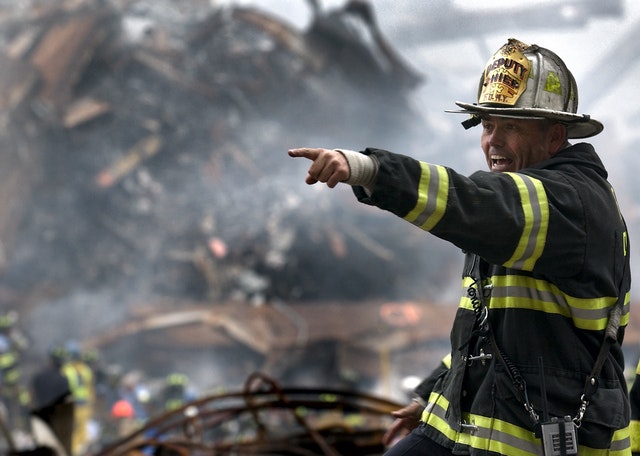In the intricate tapestry of modern engineering, a specialized discipline exists, dedicated to unraveling the mysteries behind failures and ensuring a safer world. This realm is known as forensic engineering, a field that employs meticulous scientific methods to investigate the root causes of accidents, structural collapses, and product malfunctions.
- The Necessity of Forensic Engineering
- A Multidisciplinary Approach
- Clients and Stakeholders
- Forensic Engineering in Conflict Resolution
- Types of Incidents Investigated
- The Forensic Engineering Process
- Accident Reconstruction: A Specialized Discipline
- Case Study: The F-15 Eagle Structural Defects
- Qualifications and Skills for Forensic Engineers
- The Future of Forensic Engineering
- Conclusion
Forensic engineers are the detectives of the engineering world, tasked with piecing together the puzzle of what went wrong and why. Their findings not only shed light on the circumstances surrounding an incident but also pave the way for preventive measures and improved design standards, ultimately safeguarding lives and property.
The Necessity of Forensic Engineering
Failures, whether minor or catastrophic, can have far-reaching consequences, from property damage and economic losses to personal injuries and loss of life. In such instances, forensic engineering plays a pivotal role in determining the chain of events that led to the failure, enabling legal decision-making and facilitating the prosecution or defense of civil and criminal claims.
The objective of a forensic engineering investigation is to identify the actions or factors that contributed to the failure, establishing a clear and comprehensive understanding of the causation chain. This knowledge not only aids in improving a component’s performance and reliability but also serves as invaluable evidence Evidence is any form of proof, such as objects, materials, or scientific findings, presented to establish or disprove a fact in a legal proceeding. It is used to reconstruct events and link or exclude individuals Read Full Definition in legal proceedings, insurance claims, and contract disputes.
Evidence is any form of proof, such as objects, materials, or scientific findings, presented to establish or disprove a fact in a legal proceeding. It is used to reconstruct events and link or exclude individuals Read Full Definition in legal proceedings, insurance claims, and contract disputes.
A Multidisciplinary Approach
Forensic engineering is a multidisciplinary field that encompasses various engineering disciplines, each contributing its unique expertise to unravel complex cases. From structural engineers analyzing the integrity of buildings to materials scientists examining the properties of failed components, the collaboration of diverse specialists is essential in achieving comprehensive and accurate findings.
Disciplines Involved in Forensic Engineering
- Civil Engineering: Investigating structural failures, building collapses, and construction defects.
- Mechanical Engineering: Examining failures in machinery, equipment, and mechanical systems.
- Electrical Engineering: Analyzing electrical system failures, power outages, and electrical fires.
- Chemical Engineering: Studying chemical process failures, explosions, and environmental incidents.
- Materials Engineering: Evaluating material properties, corrosion, and degradation issues.
- Biomechanical Engineering: Investigating injury mechanisms and product-related accidents.
This multidisciplinary approach ensures that no stone is left unturned, as each expert contributes their specialized knowledge and experience to the investigation.
Clients and Stakeholders
Forensic engineering services are sought by a diverse range of clients and stakeholders, each with unique needs and objectives. Understanding these stakeholders is crucial for forensic engineers to tailor their investigations and findings effectively.
Common Clients and Stakeholders
- Manufacturers: Seeking to identify design flaws, material defects, or production issues.
- Construction Companies: Investigating structural failures, building code violations, or construction deficiencies.
- Insurance Companies: Evaluating claims and determining liability in accidents or property damage cases.
- Law Firms: Requiring expert testimony and evidence for legal proceedings and litigation.
- Government Agencies: Investigating incidents involving public safety, infrastructure, or regulatory compliance.
- Financial Institutions: Assessing risks, liabilities, and potential losses associated with failures.
By collaborating with these diverse stakeholders, forensic engineers contribute to resolving disputes, improving product safety, and enhancing industry standards, ultimately benefiting society as a whole.
Forensic Engineering in Conflict Resolution
The findings of forensic engineering investigations play a pivotal role in resolving conflicts and legal disputes. Expert testimony from forensic engineers can clarify technical complexities for courts, juries, and arbitration panels, enabling informed decision-making.
Contributions to Conflict Resolution
- Expert Witness Testimony: Forensic engineers provide impartial and authoritative expert witness testimony in courtrooms, arbitration proceedings, and other legal forums.
- Evidence-Based Analysis: Through meticulous evidence collection and analysis, forensic engineers can establish a clear chain of events and allocate responsibility or liability.
- Failure Prevention: By identifying root causes, forensic engineering investigations contribute to the development of guidelines and best practices for preventing similar failures in the future.
- Knowledge Dissemination: The findings and lessons learned from forensic investigations are shared within the engineering community, expanding the collective knowledge base and promoting continuous improvement.
By shedding light on the technical aspects of failures, forensic engineers play a crucial role in resolving disputes, mitigating risks, and creating a safer environment for all.
Types of Incidents Investigated
The scope of incidents investigated by forensic engineers is vast and ever-expanding. From catastrophic structural collapses and industrial accidents to product failures and transportation incidents, no event is too small or too large for forensic engineering analysis.
Common Incident Types
- Building and Structure Failures: Investigating collapses, construction defects, and code violations.
- Industrial Accidents: Analyzing explosions, fires, chemical spills, and equipment failures.
- Product Failures: Examining design flaws, material defects, and manufacturing issues in consumer products.
- Transportation Incidents: Reconstructing vehicle accidents, aviation incidents, and maritime accidents.
- Environmental Disasters: Investigating oil spills, chemical leaks, and other environmental catastrophes.
- Natural Disasters: Assessing the impact of earthquakes, hurricanes, and other natural events on structures and infrastructure.
By meticulously examining these incidents, forensic engineers not only determine the root causes but also provide recommendations for improving safety standards, design practices, and risk mitigation strategies.
The Forensic Engineering Process
Forensic engineering investigations follow a structured and methodical process, ensuring a comprehensive and unbiased analysis of the incident. This process typically involves several key stages, each contributing to the overall understanding of the failure.
Evidence Gathering
- Site Investigation: Forensic engineers meticulously document and preserve the incident scene, collecting physical evidence and data
 Information in analog or digital form that can be transmitted or processed. Read Full Definition.
Information in analog or digital form that can be transmitted or processed. Read Full Definition. - Data Collection: Relevant documentation, such as maintenance records, design specifications, and operational logs, are gathered and analyzed.
- Witness Interviews: Eyewitness accounts and testimonies are obtained to gain insights into the events leading up to the incident.
Analysis and Reconstruction
- Failure Analysis: Utilizing advanced techniques like metallurgical analysis, non-destructive testing, and computer simulations, forensic engineers examine the failed components or structures.
- Accident Reconstruction"Accident reconstruction" refers to the process of using physical evidence, scientific principles, and investigative techniques to create a theoretical model or reenactment of a specific crime or accident scene. This method is employed to understand Read Full Definition: By integrating physical evidence, witness accounts, and scientific principles, forensic engineers reconstruct the sequence of events leading to the incident.
- Root Cause Identification: Through a systematic and unbiased approach, the root causes of the failure are identified, enabling the development of preventive measures.
Reporting and Testimony
- Comprehensive Reports: Detailed reports are prepared, documenting the investigation methodology, findings, and recommendations.
- Expert Witness Testimony: Forensic engineers may be called upon to provide expert witness testimony in legal proceedings, presenting their findings and conclusions to courts or arbitration panels.
Throughout this process, forensic engineers maintain objectivity and adhere to strict scientific principles, ensuring that their findings are reliable, defensible, and contribute to the pursuit of justice and public safety.
Accident Reconstruction: A Specialized Discipline
Within the realm of forensic engineering, accident reconstruction stands as a highly specialized and sought-after discipline. Accident reconstructionists meticulously analyze the factors contributing to vehicular accidents, transportation incidents, and other complex scenarios involving motion and impact.
The Role of Accident Reconstructionists
Accident reconstructionists employ a multifaceted approach, combining scientific principles, engineering expertise, and investigative techniques to unravel the intricate details of an accident. Their responsibilities encompass:
- Scene Investigation: Thoroughly documenting and preserving the accident scene, collecting physical evidence, and analyzing environmental factors.
- Vehicle Examination: Conducting in-depth inspections of the vehicles involved, assessing damage patterns, component failures, and occupant kinematics.
- Data AnalysisBig Data Analytics is the process of examining extremely large and complex datasets to uncover hidden patterns and insights. In forensics, it's used to analyze massive amounts of information to investigate fraud, cybercrime, and other Read Full Definition: Interpreting various data sources, such as event data recorders, surveillance footage, and witness statements, to reconstruct the sequence of events.
- Simulation and Modeling: Utilizing advanced computer simulations and modeling techniques to recreate the accident dynamics and validate hypotheses.
- Expert Testimony: Presenting findings and conclusions as expert witnesses in legal proceedings, insurance claims, and other forums.
Through their meticulous work, accident reconstructionists shed light on the contributing factors, enabling appropriate legal action, improving vehicle safety standards, and preventing future occurrences.
Case Study: The F-15 Eagle Structural Defects
The investigation into the structural defects of the F-15 Eagle fighter jet serves as a compelling case study in forensic engineering. In 2007, a series of F-15 crashes prompted a worldwide grounding of the fleet, triggering a comprehensive forensic investigation.
Uncovering the Root Cause
- Debris Analysis: Forensic engineers meticulously examined the crash debris, focusing on the longerons – load-bearing beams within the fuselage frame.
- Dimensional Discrepancies: Investigations revealed that some longerons deviated from the blueprint dimensions, with some being too thin or having rough surfaces.
- Failure Mechanism: These dimensional discrepancies caused excessive stress concentration, leading to the formation of cracks and eventual catastrophic failure of the longerons.
Preventive Measures and Outcomes
- Immediate Action: An Immediate Action Time Compliance Technical Order was issued, mandating a thorough inspection of all 700 F-15s in the U.S. Air Force fleet.
- Findings and Repairs: Approximately 40% of the aircraft had at least one longeron out of specification, with nine exhibiting cracks that could have led to mechanical failure if left unaddressed.
- Legal Implications: The pilot of the crashed F-15, Major Stephen Stilwell, filed a lawsuit against Boeing, alleging the company’s awareness of the potential structural failure risk.
This case study exemplifies the pivotal role of forensic engineering in identifying critical design flaws, implementing corrective actions, and contributing to the overall safety and reliability of complex systems.
Qualifications and Skills for Forensic Engineers
Becoming a successful forensic engineer requires a unique combination of technical expertise, analytical skills, and a keen eye for detail. While the specific qualifications may vary based on the engineering discipline, several core competencies are essential for success in this field.
Educational Requirements
- Bachelor’s Degree: A bachelor’s degree in a relevant engineering discipline, such as civil, mechanical, electrical, or materials engineering, is typically the minimum requirement.
- Advanced Degrees: Many forensic engineers pursue advanced degrees, such as a Master’s or Ph.D., to deepen their knowledge and specialize in specific areas of forensic engineering.
- Professional Certifications: Obtaining professional certifications, such as those offered by organizations like the National Academy of Forensic Engineers (NAFE), can enhance credibility and expertise.
Essential Skills and Attributes
- Analytical Thinking: The ability to analyze complex problems, identify patterns, and draw logical conclusions from available data is crucial.
- Attention to Detail: Forensic engineers must possess a keen eye for detail, as overlooking even the smallest clue can compromise the integrity of an investigation.
- Communication Skills: Effective communication, both written and verbal, is essential for presenting findings, preparing reports, and providing expert witness testimony.
- Critical Thinking: Forensic engineers must maintain objectivity and avoid biases, critically evaluating all available evidence to reach sound conclusions.
- Problem-Solving Abilities: The ability to think creatively and develop innovative solutions is invaluable in addressing unique challenges encountered during investigations.
- Continuous Learning: Staying updated with the latest technologies, techniques, and industry standards is crucial for maintaining expertise in this ever-evolving field.
By cultivating these skills and continuously expanding their knowledge, forensic engineers can contribute to the advancement of their profession and play a vital role in ensuring public safety and upholding justice.
The Future of Forensic Engineering
As technology continues to evolve and engineering systems become increasingly complex, the role of forensic engineering will become even more crucial. The integration of emerging technologies, such as artificial intelligence, machine learning, and advanced simulation techniques, will revolutionize the way forensic investigations are conducted.
Emerging Trends and Advancements
- Digital Forensics: With the increasing reliance on digital systems and automation, forensic engineers will need to develop expertise in analyzing digital data, software failures, and cyber-physical systems.
- Advanced Imaging and Sensing Technologies: The use of advanced imaging techniques, such as 3D scanning, thermal imaging, and remote sensing, will enhance the ability to capture and analyze evidence from incident scenes.
- Predictive Modeling and Simulations: Sophisticated computer simulations and predictive modeling will enable forensic engineers to recreate and analyze complex scenarios with unprecedented accuracyIn scientific and measurement contexts, "accuracy" refers to the degree of proximity or closeness between a measured value and the true or actual value of the measured quantity. Accuracy indicates how well a measurement reflects Read Full Definition.
- Interdisciplinary Collaboration: The convergence of various engineering disciplines, along with fields like data science and materials science, will foster interdisciplinary collaborations and lead to more comprehensive investigations.
- Continuous Professional Development: As the field evolves, forensic engineers will need to embrace lifelong learning and stay abreast of the latest developments through specialized training, workshops, and professional certifications.
By embracing these emerging trends and advancements, forensic engineers will be better equipped to tackle the challenges of the future, ensuring that the pursuit of truth, justice, and public safety remains at the forefront of their profession.
Conclusion
Forensic engineering is a multifaceted and dynamic field that plays a vital role in unraveling the mysteries behind failures, accidents, and incidents. By combining scientific principles, engineering expertise, and investigative techniques, forensic engineers shed light on the root causes of these events, enabling legal decision-making, improving safety standards, and contributing to the overall well-being of society.
From accident reconstruction to structural failure analysis, from product liability investigations to environmental disaster assessments, the scope of forensic engineering is vast and ever-expanding. As technology advances and engineering systems become increasingly complex, the demand for skilled and knowledgeable forensic engineers will continue to grow.
By cultivating a passion for problem-solving, maintaining objectivity, and embracing continuous learning, forensic engineers can navigate the challenges of this field and make a lasting impact on public safety, risk mitigation, and the pursuit of justice. Their work not only unravels the mysteries of the past but also paves the way for a safer and more secure future.
Summary of Key Points:
- Forensic engineering investigates the causes of failures and accidents.
- It is multidisciplinary, involving various engineering fields.
- Forensic engineers play a key role in legal cases and safety improvements.
- Emerging trends in technology will shape the future of forensic engineering.
How do you think the integration of artificial intelligence will change the future of forensic engineering investigations?












